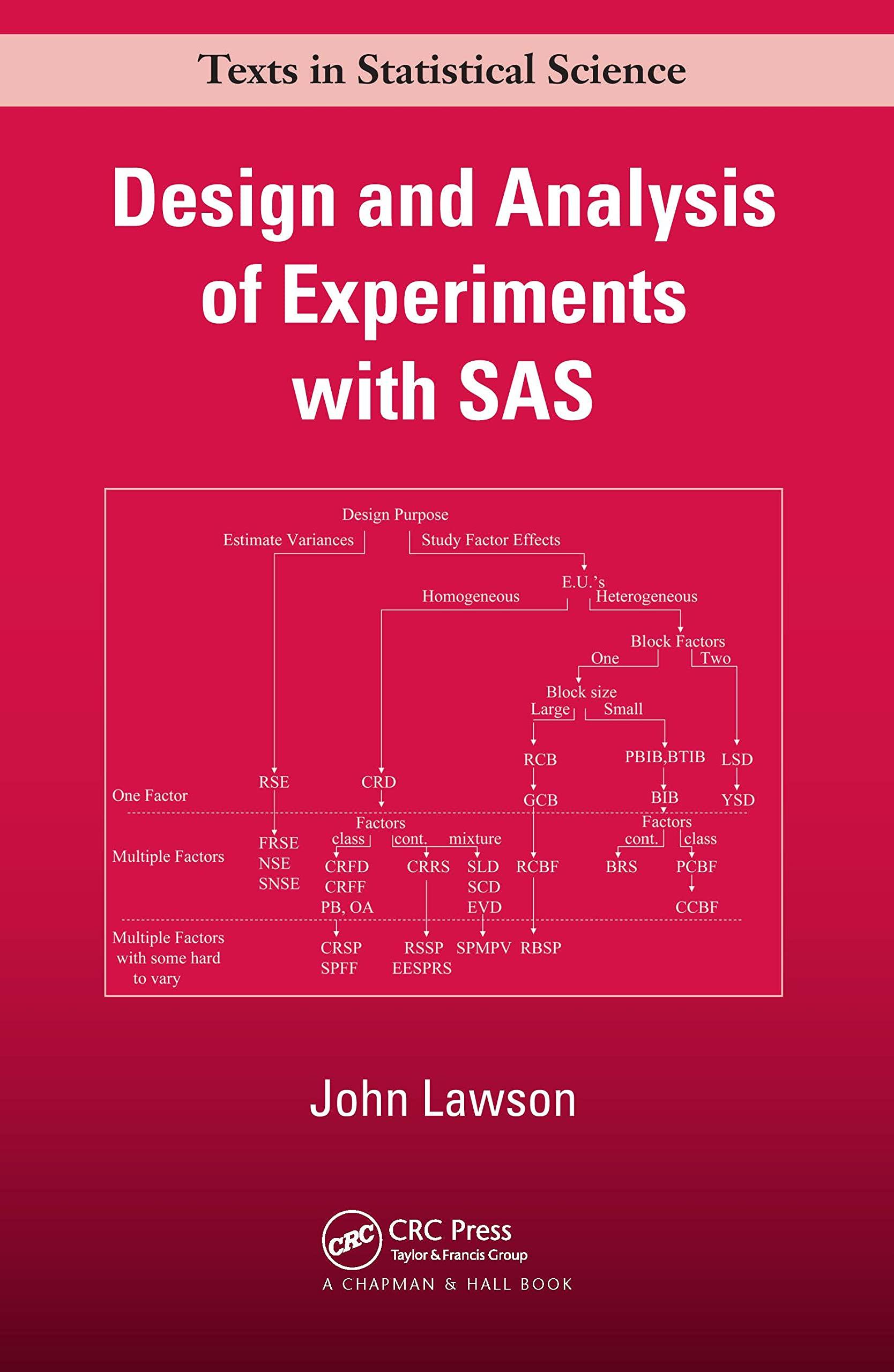3. Following up on the experiments described in Section 6.4, AlmeidaeSilva et al. (2003) ran a response
Question:
3. Following up on the experiments described in Section 6.4, AlmeidaeSilva et al. (2003) ran a response surface design to nd the optimum nutrient levels and fermentation time for producing biomass by fermentation of eu-
calyptus hemicellulosic hydrolyzate. The data is shown in the table on the next page. RB stands for the rice bran (g/l), AS is the ammonium sul-
fate (g/l), FT is fermentation time in hours, and Biomass is the mass of microorganisms produced. This was a face-centered cube design (fccd).
(a) Fit the general quadratic model using proc rsreg. Check the model to see if it is adequate. Determine whether the model can be simplied by dropping any factor from the model.
(b) Do the canonical analysis, ridge analysis or numerical optimization to determine the conditions that produce the maximum biomass within the cubical experimental region.
(c) If the model can be simplied repeat
(a) and
(b) with the simpler model.
Do the coordinates of the optimum change much? If the model has been simplied by eliminating one factor, make a contour plot of the response versus the two factors left in the model, holding the eliminated factor at its mid-level.

Step by Step Answer:






